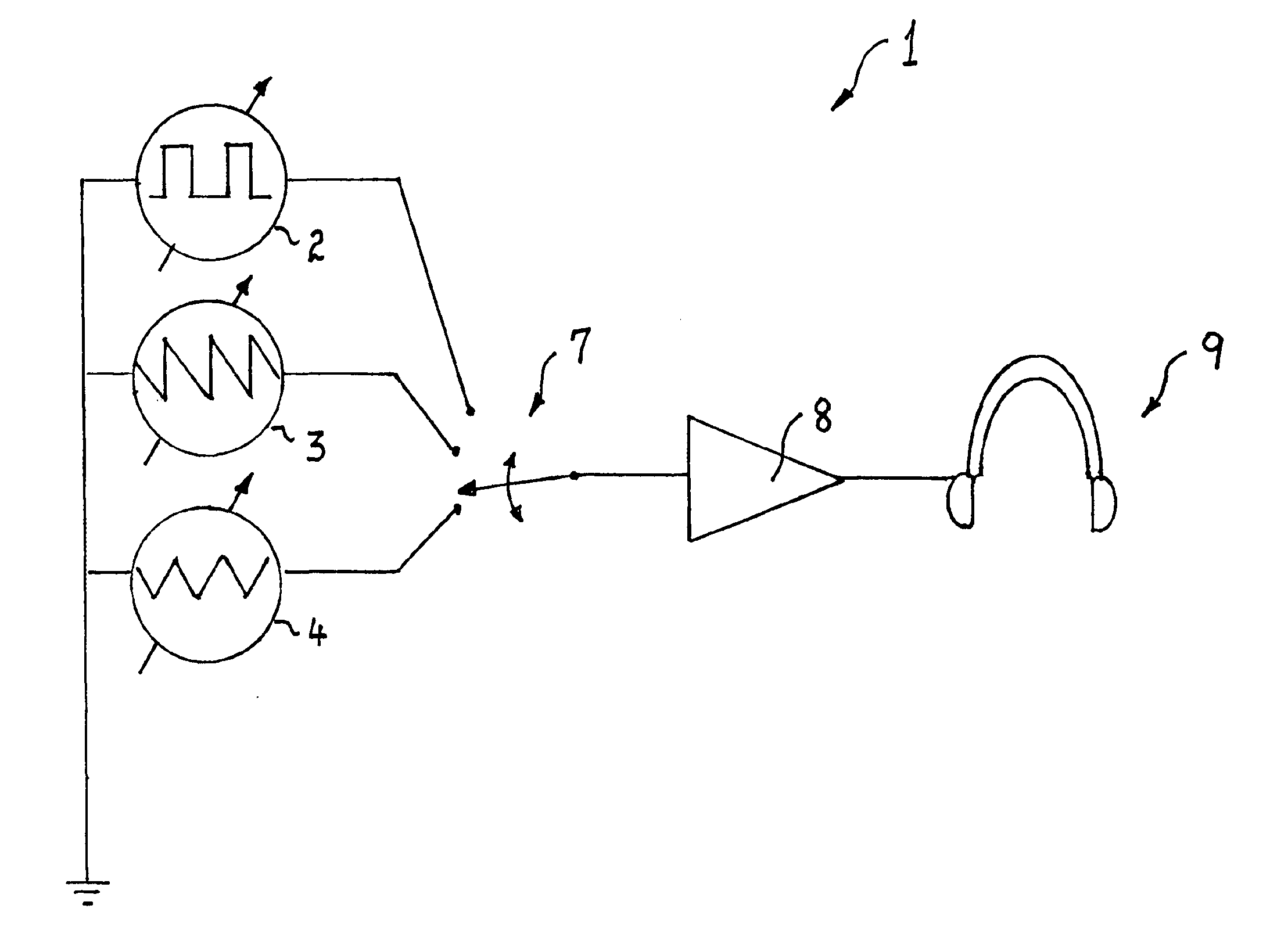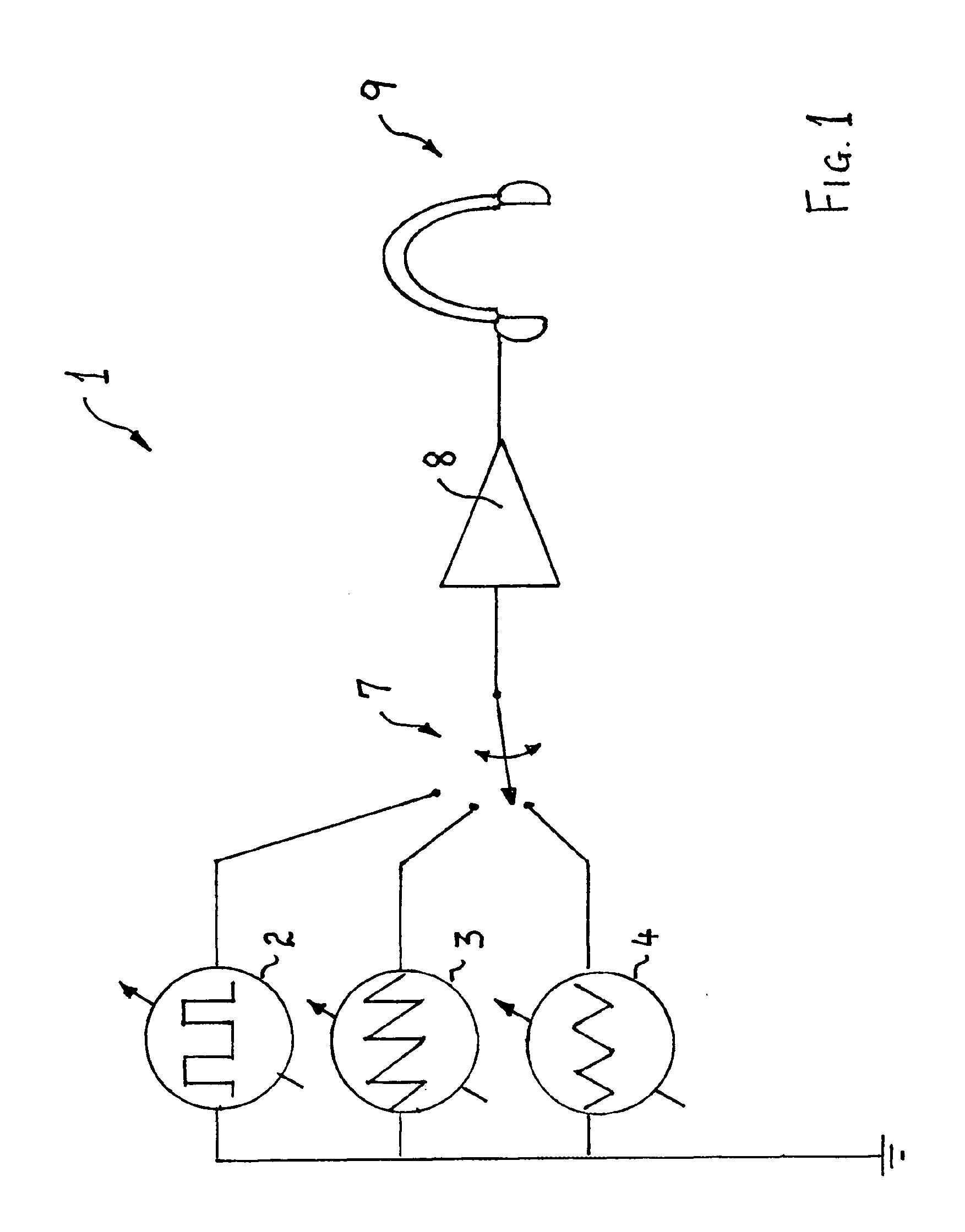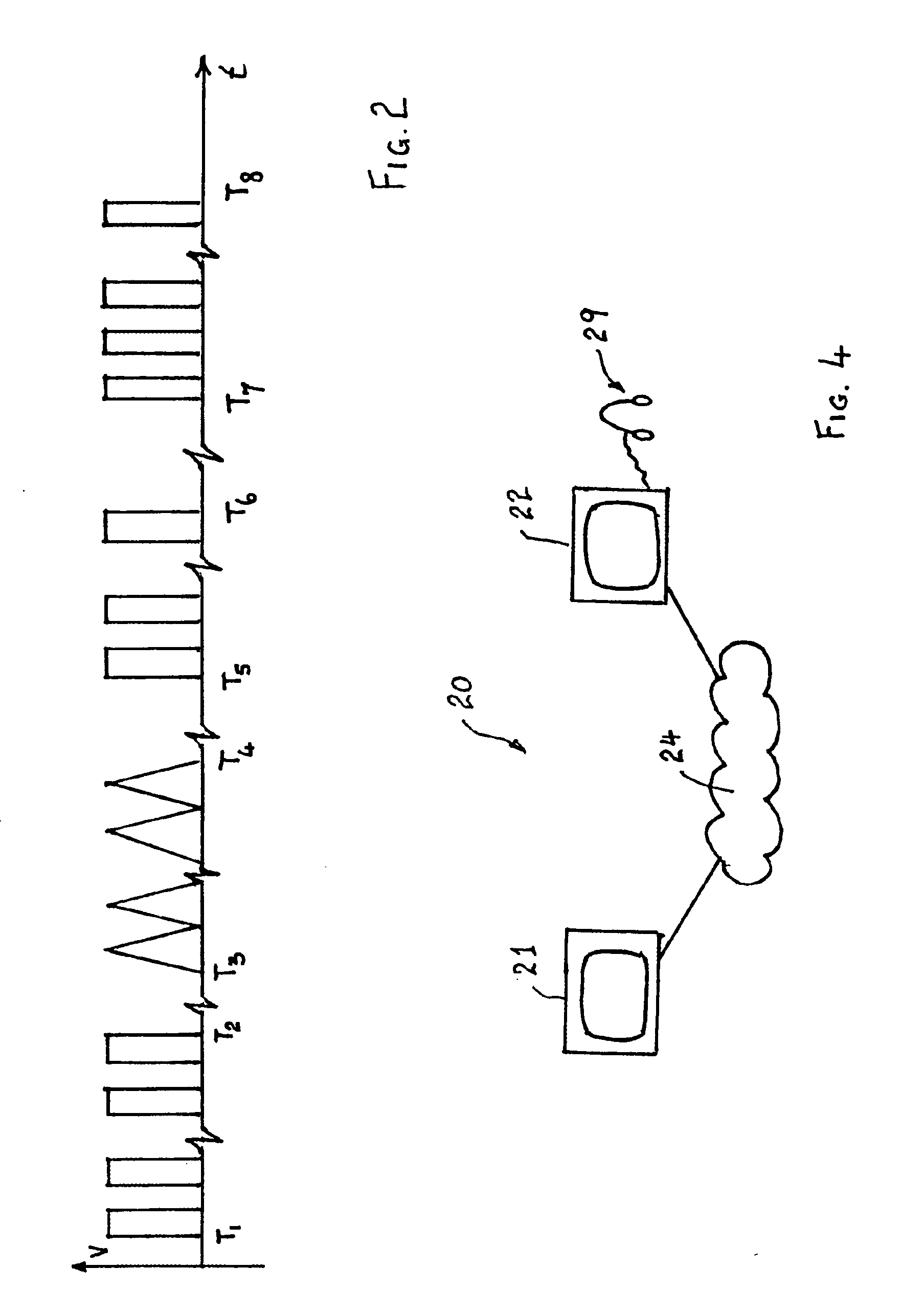Tinnitus treatment
a technology for tinnitus and treatment, applied in the field of tinnitus treatment, can solve the problems of removing tinnitus, medications have not been proven effective, and the treatment of tinnitus has not been successful or proved effective, and achieves the effect of prolonging the residual inhibition
- Summary
- Abstract
- Description
- Claims
- Application Information
AI Technical Summary
Benefits of technology
Problems solved by technology
Method used
Image
Examples
case study volunteer # 1
[0073]Case Study Volunteer #1
[0074]The first case study involved a 67 year old female who developed constant unremitting tinnitus in the right ear.
[0075]She had normal hearing which was unusual for her age. The tinnitus was sometimes pulsatile and sometimes continuous but always present. Carotid Doppler showed plaque in the carotids but normal flows and a magnetic resonance imaging (MRI) scan of the brain was normal.
[0076]On initial assessment she had 7 hours of complete residual inhibition after initial testing with a 60 Hz sawtooth wave in the right ear. She was then treated weekly with this signal in both ears for 10 minutes at each visit. The period of complete residual inhibition became longer after each treatment.
[0077]A further two months later she reported 72 hours of complete residual inhibition and said that she no longer heard her tinnitus during the day.
[0078]After another fortnight tinnitus was present but she said that tinnitus had been absent all week.
[0079]One week l...
case study volunteer # 2
[0081]Case Study Volunteer #2
[0082]A 74 year old male complained of constant unremitting tinnitus in his left ear which had been present for nine years. His audiogram showed a small bilateral high tone sensory loss consistent with presbycusis. The hearing loss was a little worse in the left ear. A CT scan of the brain was normal.
[0083]At the initial assessment, he achieved complete residual inhibition following a three minute exposure to a 44 Hz square wave signal applied to the left ear.
[0084]Arrangements were made to him to return for weekly treatment, however, he called to say that his tinnitus had not returned and that he was very pleased with the treatment. He was asked to return if the tinnitus reappeared. Two months later he was phoned and he again reported no tinnitus. He has not been heard from since and is therefore presumed to be “cured”.
case study volunteer # 3
[0085]Case Study Volunteer #3
[0086]A 29 year old male developed left sided tinnitus after walking behind a jet engine on the tarmac at Sydney Airport. He has normal hearing. The tinnitus was interfering with his ability to work.
[0087]Three weeks after walking behind the jet engine, the tinnitus had not subsided as initially expected and was still interfering with his work. After three minutes of 27 Hz square wave applied to the left ear he had 50% partial residual inhibition.
[0088]This was followed by three minutes of stimulation with a 20 Hz square wave which produced complete residual inhibition.
[0089]The tinnitus has not returned since.
PUM
 Login to View More
Login to View More Abstract
Description
Claims
Application Information
 Login to View More
Login to View More - R&D
- Intellectual Property
- Life Sciences
- Materials
- Tech Scout
- Unparalleled Data Quality
- Higher Quality Content
- 60% Fewer Hallucinations
Browse by: Latest US Patents, China's latest patents, Technical Efficacy Thesaurus, Application Domain, Technology Topic, Popular Technical Reports.
© 2025 PatSnap. All rights reserved.Legal|Privacy policy|Modern Slavery Act Transparency Statement|Sitemap|About US| Contact US: help@patsnap.com



